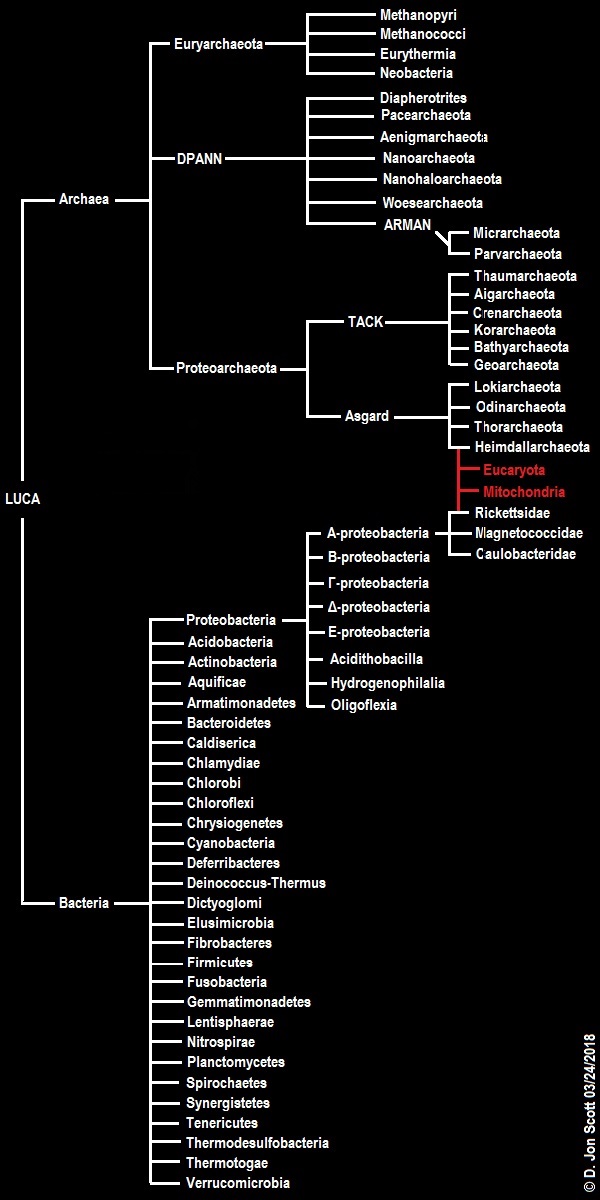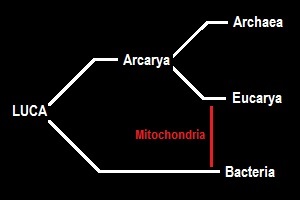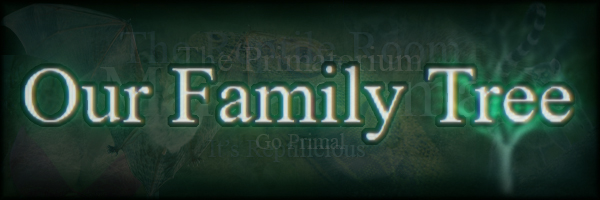The Eubiota
(Unofficial)
Definition
The Eubiota or “True Life” is not an official biological designation, but is used here mainly for necessity/convenience to distinguish “true” living things — proper, fully self-replicating, cellular life — from life-like biological entities such as organelles and viruses, many of which are descendant from true life forms and in any kind of cladistic sense would be nested within those groupings. That makes the Eubiota paraphyletic (and perhaps even polyphyletic!), and could therefore not be a proper clade using “true life” as a criterion.
If Eubiota were to be defined cladistically, it would be as the last common ancestor of the archaea and the bacteria, and everything that evolved from that common ancestor. It is possible that most viruses and organelles would fit this definition. The only way this definition would not be synonymous with Biota, is if there are some biological entities such as viroids or organelles that are more distantly related to we and bacteria than we and bacteria are to one another. If the common ancestor we share with these most distantly related quasi-lifeforms was a proper, cellular lifeform, then we might want to include all of these entities in the parent clade Biota and use Eubiota specifically for the archaea+bacteria clade. If, however, the common ancestor we share with these biological entities were not a proper, cellular lifeform, but instead some kind of “proto-life”, then perhaps we might want to label this largest grouping the biomorpha and restrict the definiton of biota.
Part I
Highest-Level Divisions
The highest-level division of life on Earth was once the kingdom.
Part I.a.
The Principle Dichotomy
The most fundamental distinction among cellular organisms on this planet is that between the Archaea (including we Eukaryotes) and the Bacteria (including the mitochondria inside our Archaea-descended, Eukaryotic cells). We Eukaryotes are a sort of cellular "hodge-podge" of the two prokaryotic domains, although the coding DNA in the nucleus of the Eukaryotic cell is clearly inherited (mostly, and with modification) from the Archaea.

Part I.b.
Previous Models
Part I.b-1.)
The Arcaryan Hypothesis

This was a modification of the Woesean tripartite Tree of Life which re-asserted the importance of endosymbiotic theory as the explanation for eukaryogenesis.
Part I.b-2.)
The Tripartite Tree of Life
Part I.b-3.)
The Prokaryote-Eukaryote Dichotomy
While the prokaryote-eukaryote dichotomy is still very useful for morphological/anatomical discussions, it has become considered a sign of grave ignorance to mistake this for a legitimate genetic delineation (much like the even more antequated vertebrate-invertebrate dichotomy used for animals). Though we now know that we Eucarya nest cladistically somewhat deeply within the Archaea, a type of prokaryote (much like we now know that vertebrates nest cladistically within the chordata, a type of invertebrate)...

